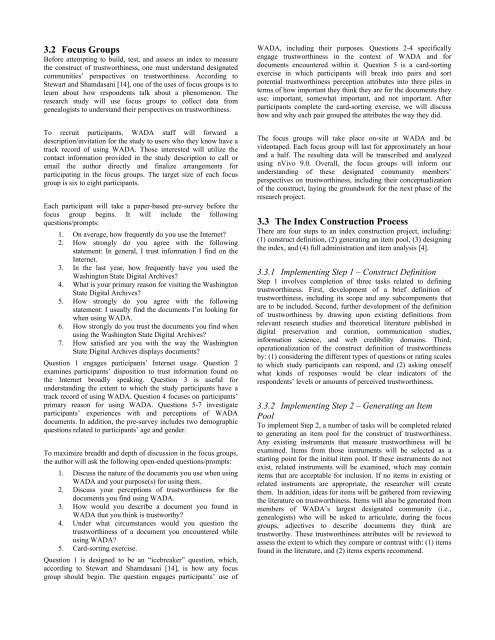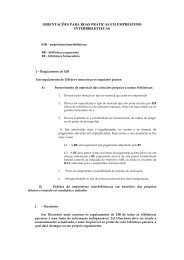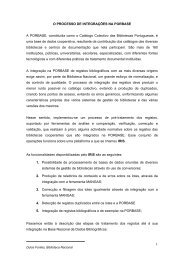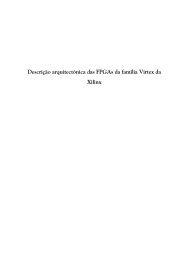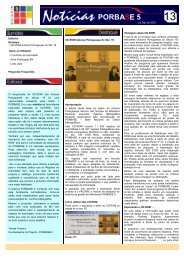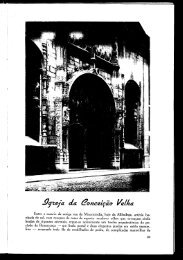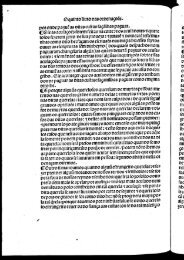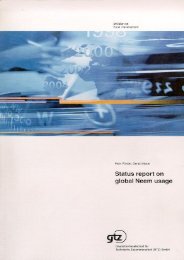Measuring Perceptions of Trustworthiness: A Research Project
Measuring Perceptions of Trustworthiness: A Research Project
Measuring Perceptions of Trustworthiness: A Research Project
Create successful ePaper yourself
Turn your PDF publications into a flip-book with our unique Google optimized e-Paper software.
3.2 Focus Groups<br />
Before attempting to build, test, and assess an index to measure<br />
the construct <strong>of</strong> trustworthiness, one must understand designated<br />
communities’ perspectives on trustworthiness. According to<br />
Stewart and Shamdasani [14], one <strong>of</strong> the uses <strong>of</strong> focus groups is to<br />
learn about how respondents talk about a phenomenon. The<br />
research study will use focus groups to collect data from<br />
genealogists to understand their perspectives on trustworthiness.<br />
To recruit participants, WADA staff will forward a<br />
description/invitation for the study to users who they know have a<br />
track record <strong>of</strong> using WADA. Those interested will utilize the<br />
contact information provided in the study description to call or<br />
email the author directly and finalize arrangements for<br />
participating in the focus groups. The target size <strong>of</strong> each focus<br />
group is six to eight participants.<br />
Each participant will take a paper-based pre-survey before the<br />
focus group begins. It will include the following<br />
questions/prompts:<br />
1. On average, how frequently do you use the Internet?<br />
2. How strongly do you agree with the following<br />
statement: In general, I trust information I find on the<br />
Internet.<br />
3. In the last year, how frequently have you used the<br />
Washington State Digital Archives?<br />
4. What is your primary reason for visiting the Washington<br />
State Digital Archives?<br />
5. How strongly do you agree with the following<br />
statement: I usually find the documents I’m looking for<br />
when using WADA.<br />
6. How strongly do you trust the documents you find when<br />
using the Washington State Digital Archives?<br />
7. How satisfied are you with the way the Washington<br />
State Digital Archives displays documents?<br />
Question 1 engages participants’ Internet usage. Question 2<br />
examines participants’ disposition to trust information found on<br />
the Internet broadly speaking. Question 3 is useful for<br />
understanding the extent to which the study participants have a<br />
track record <strong>of</strong> using WADA. Question 4 focuses on participants’<br />
primary reason for using WADA. Questions 5-7 investigate<br />
participants’ experiences with and perceptions <strong>of</strong> WADA<br />
documents. In addition, the pre-survey includes two demographic<br />
questions related to participants’ age and gender.<br />
To maximize breadth and depth <strong>of</strong> discussion in the focus groups,<br />
the author will ask the following open-ended questions/prompts:<br />
1. Discuss the nature <strong>of</strong> the documents you use when using<br />
WADA and your purpose(s) for using them.<br />
2. Discuss your perceptions <strong>of</strong> trustworthiness for the<br />
documents you find using WADA.<br />
3. How would you describe a document you found in<br />
WADA that you think is trustworthy?<br />
4. Under what circumstances would you question the<br />
trustworthiness <strong>of</strong> a document you encountered while<br />
using WADA?<br />
5. Card-sorting exercise.<br />
Question 1 is designed to be an “icebreaker” question, which,<br />
according to Stewart and Shamdasani [14], is how any focus<br />
group should begin. The question engages participants’ use <strong>of</strong><br />
WADA, including their purposes. Questions 2-4 specifically<br />
engage trustworthiness in the context <strong>of</strong> WADA and for<br />
documents encountered within it. Question 5 is a card-sorting<br />
exercise in which participants will break into pairs and sort<br />
potential trustworthiness perception attributes into three piles in<br />
terms <strong>of</strong> how important they think they are for the documents they<br />
use: important, somewhat important, and not important. After<br />
participants complete the card-sorting exercise, we will discuss<br />
how and why each pair grouped the attributes the way they did.<br />
The focus groups will take place on-site at WADA and be<br />
videotaped. Each focus group will last for approximately an hour<br />
and a half. The resulting data will be transcribed and analyzed<br />
using nVivo 9.0. Overall, the focus groups will inform our<br />
understanding <strong>of</strong> these designated community members’<br />
perspectives on trustworthiness, including their conceptualization<br />
<strong>of</strong> the construct, laying the groundwork for the next phase <strong>of</strong> the<br />
research project.<br />
3.3 The Index Construction Process<br />
There are four steps to an index construction project, including:<br />
(1) construct definition, (2) generating an item pool, (3) designing<br />
the index, and (4) full administration and item analysis [4].<br />
3.3.1 Implementing Step 1 – Construct Definition<br />
Step 1 involves completion <strong>of</strong> three tasks related to defining<br />
trustworthiness. First, development <strong>of</strong> a brief definition <strong>of</strong><br />
trustworthiness, including its scope and any subcomponents that<br />
are to be included. Second, further development <strong>of</strong> the definition<br />
<strong>of</strong> trustworthiness by drawing upon existing definitions from<br />
relevant research studies and theoretical literature published in<br />
digital preservation and curation, communication studies,<br />
information science, and web credibility domains. Third,<br />
operationalization <strong>of</strong> the construct definition <strong>of</strong> trustworthiness<br />
by: (1) considering the different types <strong>of</strong> questions or rating scales<br />
to which study participants can respond, and (2) asking oneself<br />
what kinds <strong>of</strong> responses would be clear indicators <strong>of</strong> the<br />
respondents’ levels or amounts <strong>of</strong> perceived trustworthiness.<br />
3.3.2 Implementing Step 2 – Generating an Item<br />
Pool<br />
To implement Step 2, a number <strong>of</strong> tasks will be completed related<br />
to generating an item pool for the construct <strong>of</strong> trustworthiness.<br />
Any existing instruments that measure trustworthiness will be<br />
examined. Items from those instruments will be selected as a<br />
starting point for the initial item pool. If these instruments do not<br />
exist, related instruments will be examined, which may contain<br />
items that are acceptable for inclusion. If no items in existing or<br />
related instruments are appropriate, the researcher will create<br />
them. In addition, ideas for items will be gathered from reviewing<br />
the literature on trustworthiness. Items will also be generated from<br />
members <strong>of</strong> WADA’s largest designated community (i.e.,<br />
genealogists) who will be asked to articulate, during the focus<br />
groups, adjectives to describe documents they think are<br />
trustworthy. These trustworthiness attributes will be reviewed to<br />
assess the extent to which they compare or contrast with: (1) items<br />
found in the literature, and (2) items experts recommend.


